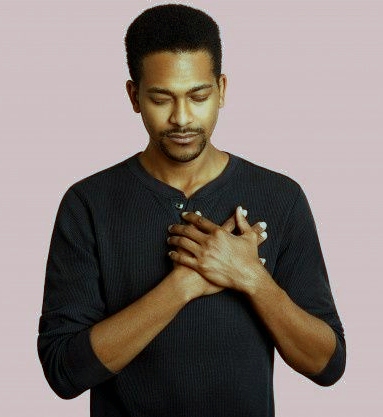Mindfulness
Mindfulness is part of overall wellness. It’s easy to say you simply don’t have time to be mindful. With so much going on in daily life, who has time to stop and be present? But everyone has at least 10 minutes to spare to practice mindfulness.
The point of these brief, daily reflections is to help you tap into calmness whenever life gets too hairy. Practicing everyday mindfulness can also improve your memory and concentration skills and help you feel less distracted and better able to manage stress . And mindfulness tools have been successfully incorporated into treatments for anxiety and depression.
There is more than one way to practice mindfulness. Still, any mindfulness technique aims to achieve a state of alert, focused, relaxed consciousness by deliberately paying attention to thoughts and sensations without passing judgment on them. This allows the mind to focus on the present moment with an attitude of acceptance.
Mindfulness Exercises
Here are three simple exercises you can try whenever you need a mental break, emotional lift, or just want to pause and appreciate everything around you. Devote 10 minutes a day to them and see how the experience changes your outlook. It’s time well spent.
Simple meditation

A quick and easy meditation is an excellent place to begin practicing mindfulness.
- Sit on a straight-backed chair or cross-legged on the floor.
- Focus on an aspect of your breathing, such as the sensations of air flowing into your nostrils and out of your mouth, or your belly rising and falling as you inhale and exhale.
- Once you’ve narrowed your concentration in this way, begin to widen your focus. Become aware of sounds, sensations, and ideas. Embrace and consider each without judgment.
- If your mind starts to race, return your focus to your breathing. Then expand your awareness again.
- Take as much time as you like: one minute, or five, or 10 — whatever you’re comfortable with. Experts in mindfulness meditation note that the practice is most helpful if you commit to a regular meditation schedule.
Open awareness
Another approach to mindfulness is “open awareness,” which helps you stay in the present and truly participate in specific moments in life. You can choose any task or moment to practice open awareness, such as eating, taking a walk, showering, cooking a meal, or working in the garden. When you are engaged in these and other similar routine activities, follow these steps.

- Bring your attention to the sensations in your body, both physical and emotional.
- Breathe in through your nose, allowing the air to fill your lungs. Let your abdomen expand fully. Then breathe out slowly through your mouth.
- Carry on with the task at hand, slowly and with deliberation.
- Engage each of your senses, paying close attention to what you can see, hear, feel, smell, and taste.
- Try “single-tasking,” bringing your attention as fully as possible to what you’re doing.
- Allow any thoughts or emotions that arise to come and go, like clouds passing through the sky.
- If your mind wanders away from your current task, gently refocus your attention back to the sensation of the moment.
Body awareness
Another way to practice mindfulness is to focus your attention on other thoughts, objects and sensations. While sitting quietly with your eyes closed, channel your awareness toward each of the following:

Sensations: Notice subtle feelings such as an itch or tingling without judgment and let them pass. Notice each part of your body in succession from head to toe.
Sights and sounds: Notice sights, sounds, smells, tastes and touches. Name them “sight,” “sound,” “smell,” “taste,” or “touch” without judgment and let them go.
Emotions: Allow emotions to be present without judging them. Practice a steady and relaxed naming of emotions: “joy,” “anger,” “frustration.”
Urges: When you feel a craving or an urge (for instance, to eat excess food or practice an unwanted behavior), acknowledge the desire and understand that it will pass. Notice how your body feels as the craving enters. Replace the wish for the craving to go away with the specific knowledge that it will subside.
Gratitude Book

Another simple way to embrace mindfulness is to start a gratitude diary. Buy yourself a new empty notebook. Try and make sure it’s a book that you really appreciate the look and feel of maybe a strong cover or quality paper. Name it your gratitude book and refer to it as such.
Now you have to take time every day to update your gratitude book. If you can’t immediately think of anything, then acknowledge that you are grateful for having the time to begin or update your book. It’s NOT a diary, but like a diary, try and update it every day. If you miss any days, try to think back on anything you have ben grateful for over that period.
Don’t use it for ANYTHING other than affirmation of your gratitude. Your book is valuable, maybe even sacred and you won’t want your affirmations of Gratitude marred by a quick shopping list or a list of actions required after a hasty phone call.
In times when you are feeling low, take the time to read back through your book and remind yourself of all the little things that you have reason to be grateful for since starting your book. Remind yourself that the little things are important.
The Benefits of Mindfulness
Mindfulness is a technique you can learn which teaches you to notice what’s happening in the present moment without judgement. You might take notice and be aware of your mind, your body or your surroundings. The technique has roots in Buddhism and meditation, but you don’t have to be spiritual, or have any particular belief to try it. Mindfulness aims to help you:
- become more self-aware
- feel calmer and less stressed
- feel more able to choose how to respond to your thoughts and feelings
- cope with difficult or unhelpful thoughts
- be kinder towards yourself.
Many people find practising mindfulness helps them manage their day-to-day wellbeing, but it doesn’t always work for everyone. Mindfulness is a skill. It requires work like any therapy and requires practice like any skill. It isn’t a shortcut and courses only set the scene, but most find it enjoyable and rewarding. Most of all it might bring some much-needed peace into your life.
We have seen from the above that Mindfulness is valuable to us when we are alone, but it’s also valuable when interacting with others; with family colleagues or strangers:
Physical Mindfulness
We hold our bodies very differently dependent on what is going through our minds. Take a moment to draw yourself to your full height, hold back your shoulders, and lift your head looking ahead of you confidently. This is how someone perceives you when you feel confident. Think how powerful this stance could be when you find yourself in a situation where you are actually not feeling as confident as you might like to be. YOU know that but no one else does!
You may be surprised to know that standing confidently actually has the effect of boosting your confidence especially when you are also perceived to be speaking confidently as well.
When you are with others, take the time to note how you stand, what you do with your hands and how you hold you hear. These are ‘body cues’ and everyone demonstrates them.
This knowledge of your own body cues can then be applied to others when you are with them. Do they have their arms crossed? Do they have their brows furrowed? Do they have their heads tilted? Do they have their arms open? All these intricacies of how someone is holding their body stance can be very telling of what is actually going on inside their head. Reading body language is a practice that can take some time to master but pays dividends in the log term and is a skill you will never lose.
Interactive Mindfulness
We express our thoughts through what we say but just as expressive can be our own body language.
The next stage of mindfulness is to notice the way that you are holding your body in social situations. Facial expressions are an obvious way to communicate emotion. It is a valuable skill to understand your own facial expressions so that they can become part of your one to one communication. Take the time to stand in front of a mirror and express your emotions through your facial expressions.
Try making different facial expressions like anger, frustration, curiosity, repulsion, happiness or surprise and then consider how you might demonstrate this to different people. Furthermore, consider your range of expressions. For example, how would you demonstrate anger to someone you are close to, as opposed to someone that you do not know well. You will then have a better understanding of what other people are seeing when they converse with you.
Mindfulness at Home
Mindfulness is something we can bring home to the whole family to help increase the presence of everyone involved. Whether you live with roommates or you’re married with kids, there are many different methods of mindfulness you can incorporate to help increase presence and reduce mental chatter for all concerned.
When one person is mindful it can spread to the next person helping to create social interactions that are much more enjoyable.
This can also help your home life if you find that they are struggling with other people. For example, perhaps you and your partner are frequently fighting? Maybe it’s because both of you have been focused on your own mindsets rather than what’s been going on in your personal lives? Perhaps your kids are struggling to pay attention to school, or that you find that you’re becoming disconnected from other family members? Increasing your (and their) mindfulness can help make the situation more comfortable so that everyone can open up and express how they are feeling.
One way to make mindfulness a more regular part of your life is to utilise it regularly (weekly?). Importantly, set a specific day to be mindful with your family. This might be doing something like; having a game night every Monday or having a screen free day every week. Game nights are great ways to make sure that everybody is present and focused. Choose activities that require teamwork and logic building skills to make sure that you and all parties involved are more aware as things are unfolding around you. Turn off the TV and play some music in the background. Make some snacks to encourage mindful eating and consider making a fun drink for the whole family. Screen free days are really beneficial for boosting mindfulness. This means everyone has to put their phone away. Although it’s probably best, you don’t always have to participate in the same activity together. The screen free day could involve simply reading while in the same room as one another.
Another popular idea for increasing mindfulness in a social setting is through walking. Simply going on a nature walk with your partner can help you connect to each other on a deeper level. You may feel you are able to discuss things that have been on your mind and share different thoughts and ideas.
Another thing that works well is to create something together as a group. In this environment, you come together and use everyone’s strengths to work together to reach a common goal. When you are in a group environment you can learn new things from each other. Group creativity is a great way to ensure everyone’s attention is pulled to the same place allowing everyone to learn from each other and showcase their unique strengths.
![]() – Members that become involved in Lodge committees are in fact continually improving their personal mindfulness. Bonds are formed, appreciation is shown for individual skills and effort and intent are recorded.
– Members that become involved in Lodge committees are in fact continually improving their personal mindfulness. Bonds are formed, appreciation is shown for individual skills and effort and intent are recorded.
![]()
